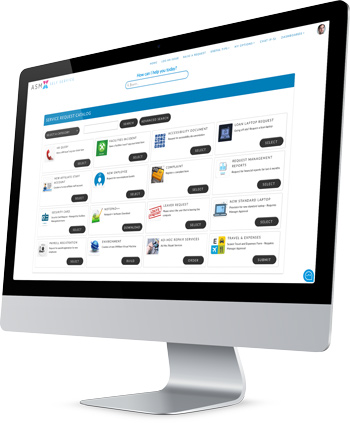Industry
Uses
Flexible Options
Services


Local authorities are vital public institutions responsible for providing essential services to communities. These services encompass everything from education and housing to waste management and public safety.
Local councils in the United Kingdom are facing unprecedented financial stress. Seven English councils have issued a Section 114 notice since 2020, with a reported 26 councils at risk of bankruptcy in the next two years.
Since 2008, local government has seen a significant decrease in funding from central government sources, which is further exacerbated by the economic consequences of the COVID-19 pandemic.
A growing need for services, in conjunction with an ageing population, has resulted in numerous local governments being burdened by significant fixed expenses like pensions and unalterable long-term contracts, constraining their ability to reshape budgets.
Furthermore, certain councils may find themselves pushed to the brink of financial insolvency due to historical equal rights pay claims.
Adding to these challenges, the rise in inflation and the necessity to increase wages to retain skilled professionals are driving operational costs to unsustainable levels.
Overall, the current financial landscape is likely the most challenging it has ever been for councils in the United Kingdom, as they grapple with declining revenue and increasing expenses.
These fiscal challenges have necessitated a closer examination of operational expenses, including IT Service Management (ITSM) solutions.
To effectively deliver vital services to their communities, councils rely heavily on IT infrastructure and services. Many councils have already invested in ITSM tools but are struggling with high costs, often associated with expensive vendors.
In times of financial stress, it is crucial that councils gain maximum value from their operations for their customers, while minimising the cost of service delivery.
This article explores how transitioning to a cost-effective ITSM solution can offer substantial benefits to local authorities under financial pressure. By considering cost-saving strategies without compromising on quality or functionality, councils can reallocate funds to critical services while maintaining efficient IT operations.

Begin your cost-saving efforts by considering the total cost of ownership (TCO) of your existing ITSM tool. Look beyond the initial licensing fees to identify additional costs, including re-implementation, additional training, maintenance, support, and any additional modules or features you may need as your organisation grows.
Regularly reassessing the TCO of your ITSM tool can help you make informed decisions about the value and cost-effectiveness of your ITSM software investment. This requires a comprehensive analysis of both visible and hidden costs.
Here are various aspects to consider:
Below are some best practice suggestions for selecting a cost-effective ITSM tool for local authorities.
Implementation Costs
Consider the implementation cost of both external and internal resources for the deployment of a new ITSM solution.
Affordable Scalability
Consider your organisation's growth. Choose a tool that can scale with your business, allowing you to add users and features as needed. This prevents the need for frequent tool changes, which can be costly and time-consuming. Ensure scalability is affordable, allowing for expansion without causing financial strain.
Transparent Pricing Structures
Seek vendors with transparent pricing structures. Avoid hidden fees and unexpected costs by thoroughly understanding the terms, conditions, and potential add-on expenses associated with the ITSM tool.
Cloud vs. On-Premise
Evaluate the costs associated with cloud-based solutions versus on-premises options. Cloud solutions often have lower upfront costs and eliminate the need for hardware, but ongoing subscription fees can accumulate. Compare the total cost of ownership (TCO) for both options.
Integration Capabilities
Ensure that the chosen tool integrates seamlessly with your existing IT infrastructure. Integration capabilities can reduce the need for additional tools, saving both time and money in the long run.

User-Friendly Interface
An intuitive and user-friendly interface can reduce training time and support costs. Ensure that the ITSM solution is easy for your team to use, minimizing the need for extensive training.
Support and Maintenance Costs
Consider ongoing support and maintenance costs. Some ITSM tools may have lower upfront costs but higher ongoing support fees. Evaluate the support options provided by the vendor.
Configuration and Flexibility
Assess the level of configuration and flexibility the ITSM tool offers. A tool that can easily be configured to adapt to your organisation's unique processes may save costs associated with workflow changes and costly development fees.
Automation and Workflow Efficiency
Evaluate the level of automation and workflow efficiency the ITSM tool can bring to your organisation. Automated processes can lead to time and cost savings by reducing manual intervention.
Documentation and Training Resources
Check if the vendor provides comprehensive documentation and training resources. Well-documented tools can facilitate self-service and reduce the need for costly external training.
Alemba Service Manager (ASM) is the ITSM tool of choice for a large number of UK-based local authorities, including North Yorkshire Police, Cheshire Constabulary, Liverpool City Council, Portsmouth City Council, Worcestershire County Council and Swansea Council.
ASM offers a flexible, low total cost of ownership ITSM solution, that allows local authorities to make cost savings without the need to compromise on functionality:
Streamlining Administrative Processes
Enhancing Service Delivery
Cost Efficiency
Data Management and Reporting
Agility and Scalability
Citizen Engagement
Collaboration Across Departments
Effective asset and configuration management practices can optimize IT resources and minimize unnecessary costs. By maintaining an accurate inventory of hardware, software, and other IT assets, along with their configurations and relationships, you can improve asset utilization, reduce duplication, and make informed decisions regarding procurement, maintenance, and, retirement.
Developing and maintaining a service catalogue promotes transparency, streamlines service delivery, and optimises costs. A well-defined service catalogue helps users understand available services, associated costs, and service levels. By aligning service offerings with business needs and providing clear pricing information, you can enable users to make informed choices, avoid unnecessary expenses, and maximise value.
Effective collaboration and communication between IT teams, business stakeholders, and end users are essential for driving value for money. By understanding business needs, soliciting feedback, and fostering a culture of collaboration, you can align IT services with organizational goals and deliver maximum value,
Adopting a service portfolio management approach helps prioritize and align IT services with business objectives. By focusing on services that deliver the most value to the organization, you can optimize resource allocation and ensure that investments are aligned with business needs.
Establishing SLAs with clear performance metrics and targets can help manage expectations and ensure that IT services meet business requirements. SLAs should be designed to strike a balance between service quality and cost, enabling efficient resource utilization while delivering value.
Implementing CSI practices allows for ongoing assessment and optimization of IT services. By monitoring performance, gathering feedback, and identifying areas for improvement, you can drive efficiency and cost-effectiveness while enhancing service quality.
Understanding and managing demand for IT services is crucial in maximizing value for money. By analysing historical data, conducting capacity planning, and implementing demand management practices, you can optimize resource utilization and avoid unnecessary costs
Implementing sound financial management practices within ITSM enables better cost transparency and control. By establishing budgets, tracking expenses, conducting cost-benefit analyses, and implementing chargeback/showback mechanisms, you can optimize spending and demonstrate the value of IT services.
Effective supplier management ensures that IT service providers deliver value for money. Regularly reviewing and evaluating vendor contracts, negotiating favourable terms, and monitoring supplier performance can help optimize costs and improve service quality.
Leveraging automation and self-service capabilities can reduce costs associated with manual tasks and empower end users to resolve issues independently. Implementing self-service portals, chatbots, and automated workflows can improve efficiency, reduce service desk workload, and drive value for money.
Building a robust knowledge management system helps capture and share knowledge across the organization. By documenting known errors, best practices, and solutions, vou can accelerate problem resolution, reduce downtime, and minimise costs associated with repeated incidents.
Proactively managing IT risks can help mitigate potential disruptions and associated costs. Conducting risk assessments, implementing preventive measures, and establishing business continuity plans can minimize the financial impact of IT incidents.